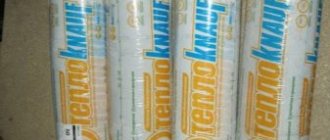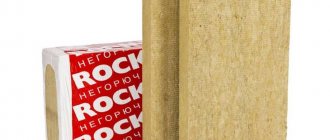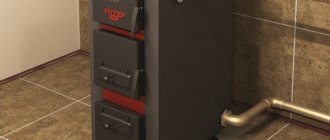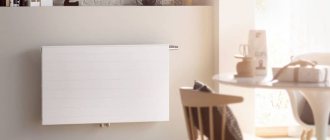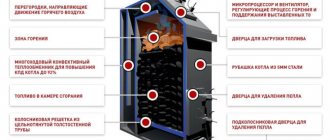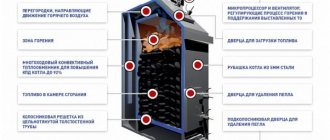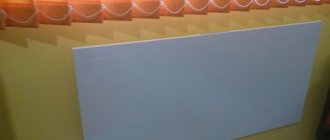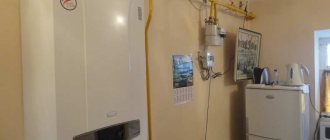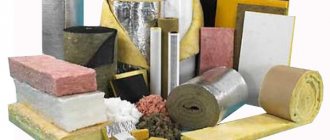Basalt slabs TechnoNIKOL GreenGuard Universal 50 mm. 600x1200 mm. Photo by Leroy Merlin
We decided to highlight the story about mineral basalt slabs as a separate topic.
What it is, what they are, we will tell you at the very beginning, we will list all the varieties and their purpose. We hope that our illustrated material will be useful to those who are familiar with this subject firsthand and would like to receive information about it that will not be superfluous.
Dimensions
High heat-insulating and vapor-permeable properties allow its use for insulation of all building elements:
- floors;
- canvases;
- walls;
- floors;
- roofs.
Manufacturers took into account the most common design features of buildings and organized the production of a flexible range of basalt slab sizes.
Width: 500, 600, or 1000 mm. Length: 800, 1000 or 1200 mm. Thickness: 20, 25, 40, 50, 80, 100, 130 and 200 mm.
Photo
A small gallery of photos of basalt slabs will give you an idea of how different slabs from different manufacturers, with different densities and thicknesses can look.
Basalt slabs ISOROC Super Warm. Teplostroy Photos
Basalt slabs Rockwool Standard 50 mm. Photo by Leroy Merlin
Basalt slabs Acoustic ultra-thin Rockwool 27 mm. Photo by Leroy Merlin
Thermal and sound insulation
Plates from all well-known manufacturers have good heat and sound insulation properties. Thus, depending on the quality, basalt slabs have a thermal conductivity coefficient of 0.03-0.036 W/(m*K), thereby surpassing in this parameter all types of bulk insulation and only slightly inferior to technologically advanced and expensive slab insulation made of foamed polystyrene.
Good sound insulation of basalt slab is due to its low density. Large manufacturers have a line of special acoustic basalt slabs in their assortment.
The process of installing flat roof insulation on a base made of profiled sheets Source Okno-pro.ru
The high vapor permeability of the insulation, amounting to 0.3-0.5 mg/m*h*Pa, makes it an ideal option for external wall insulation. Coupled with a low coefficient of water absorption, no more than 2% by volume, it becomes possible to use basalt slabs for insulation:
- frame walls;
- attic and rafter systems, roofs;
- other wooden structures.
In order to make it possible to use basalt insulation in conditions of high humidity (in the kitchen, bathroom or in the ventilation system), manufacturers have provided a special line of slabs treated with a water-repellent compound. Such slabs are not afraid of short-term exposure to moisture, that is, they do not lose their thermal insulation properties.
Installation of insulation on cross lathing Source Tproekt.com
Insulation properties
Among the advantages of thermal insulation fiber, the following should be highlighted:
- Basalt is a non-combustible material, which makes it possible to install it on fire-hazardous buildings.
- The heat and sound insulation qualities of the mats also have a sufficient level. This quality gives an advantage when installing residential buildings.
- Due to their moisture resistance, basalt slabs are used in the construction of baths and saunas.
- The thermal conductivity coefficient is low.
- Withstands temperature fluctuations and is resistant to frost.
Fire safety
Basalt slabs are characterized by increased fire resistance. Melting of the material occurs when exposed to temperatures not lower than 1100 °C for at least 2 hours. When ignited, basalt wool does not emit smoke or other toxic volatile compounds. High-quality slabs manufactured in accordance with GOST meet all modern fire safety requirements and can be used in wooden housing construction without any additional fire safety measures.
A clear example of the heat resistance of a basalt wool slab Source Lubnyastroy.rf
What characteristics does it have?
The thermal conductivity coefficient is an important indicator when choosing a suitable material. The lower the numbers, the better the base performs its functions. The size of basalt insulation also varies.
But insulation materials must meet a number of other requirements. Examples: environmental friendliness, the ability of a product to emit hazardous compounds or dust particles. Basalt wool has become one of the market leaders in terms of environmental friendliness. This is a natural type of composition with a small proportion of synthetic resins.
The main thing is to choose trusted manufacturers who prefer not to risk their own reputation by using cheap analogues of adhesive resins in production. Then buyers do not receive high-quality basalt insulation; the dimensions and thickness also remain unsatisfactory.
Pros and cons of basalt slabs
Despite the fact that basalt slabs have an impressive number of advantages, they also have disadvantages.
| pros | Minuses |
| Non-flammability, high fire resistance | High requirements for compliance with construction and installation technology |
| More effective than many other slab insulation materials: glass wool, slag wool, etc. | Completely loses its properties when significantly wet. |
| Long service life | Cannot be used in basements or basements |
| High sound and vibration absorption | When used indoors, a vapor barrier must be installed |
| Easy to install | — |
Varieties
There are several main types of basalt slabs, depending on their intended use:
- roofing;
- façade;
- wall;
- acoustic;
- hydrophobonized.
The process of installing roofing insulation Source Dobrostroy.rf
The main parameter that varies depending on the purpose of the slab is its density. High-density slabs can withstand significant loads and have a compressive strength of more than 30 kPa. The densest slabs are positioned by the manufacturer as a complete base for roofing. On the other hand, high density reduces the thermal insulation properties of the slab and also significantly increases its cost.
Let's get to know each other better
Basalt thermal insulation has excellent technical characteristics and consumer qualities.
First of all, this is a low specific thermal conductivity (about 0.04 - 0.05 units). This value shows how much energy passes through 1 m2 per unit time. This low value is ensured by the presence of a large amount of air, which is the best natural heat insulator, in the volume of the slab. The random arrangement of fibers ensures the immobility of the environment while observing the installation rules. The internal structure contributes to high noise insulation properties. The data is confirmed by tests carried out in laboratory conditions.
The use of a heat insulator allows you to reduce the cost of purchasing and constructing external walls. In terms of their heat-retaining capacity, 10 cm slabs will replace a wooden wall 4 times, and a brick wall 19 times thicker.
The density of basalt insulation is in the range from 35 to 200 kg/m3. The higher the density, the greater the mechanical loads the slab can withstand.
Selection of basalt slabs
Choosing a type of slab should begin with determining the place of its application:
- roof or attic insulation;
- insulation of frame walls;
- external insulation of aerated concrete walls;
- many other options.
Specialized foil fireproof insulation for stoves Source Technowool.com.tr
Of course, the selection and purchase of insulation should be entrusted to professionals. But, manufacturers have provided a wide range of products, positioned according to the type of intended use.
| Purpose | Brand |
| Base and insulation of flat roofs | TechnoNIKOL Technoruf N30, Izovol K-120 |
| For roof or attic | TechnoNIKOL Technolight Extra, TechnoNIKOL Technoruf, Izovol Izobel L-25, Paroc Extra, Greenguard Universal, Isover Master of Warm Roofs |
| For walls and partitions | Rockwool Light Butts, TechnoNIKOL Technoblock/Technolight, Rockwool Acoustic Butts |
| For facade | TechnoNIKOL Technofas, TechnoNIKOL TechnoFas Cottage, Rockwool Facade Butts, Izovol F-120, TIZOL Euro-Facade Optima |
| For ceilings and floors | Rockwool Light Butts, Rockwool Acoustic Butts, Rockwool Floor Butts, Paroc eXtra Light, TechnoNIKOL Rocklight, Izovol St-50, Isover Frame House |
Main manufacturers
Several large manufacturers of basalt insulation materials operate in the Russian Federation.
TechnoNIKOL
TechnoNIKOL Construction Corporation is one of the five largest manufacturers of thermal insulation materials in Europe. The main line of basalt insulation:
- Technolight - used for insulating surfaces with low external loads.
- Tekhnoruf is the structural basis for fused bitumen roofs.
- Technovent are hydrophobonized slabs designed for insulation of ventilation systems and certain types of rooms with high humidity.
- Technofas – facade panels used in civil and industrial construction.
- Rocklight is the most common line with low specific density, used for insulation of all types of structures: floors, ceilings, walls, attics, etc.
Exterior view of the TechnoNIKOL insulation production plant Source Kraski-net.ru
Rockwool
Rockwool products are familiar to Russian consumers thanks to their narrowly targeted lines of basalt slab insulation:
- Rockwool Acoustic Butts is a high-quality soundproofing insulation. The use of special fiber allows the production of acoustic insulation without the use of a foil layer.
- Rockwool Facade Butts - construction market professionals appreciated the high strength qualities and ease of installation of facade panels.
- Rockwool Scandic is a line of insulation materials designed specifically for private housing construction.
Photo of a workshop at a Rockwool insulation production plant in Europe Source Innotechs.ru
Application
The properties of basalt insulation explain its wide range of applications:
- for insulation of wet and suspended ventilated facades;
- for insulating roofs of various shapes;
- for thermal insulation of floors, walls, partitions;
- for insulating walls finished with sandwich panels when using layered masonry;
- in bath complexes and saunas;
- in ventilation pipes, chimneys, wherever structures are exposed to high temperatures;
- to protect pipelines. Temperatures of -170C and +1000C on the surface are not a hindrance for stone wool;
- in shipbuilding. For insulation and soundproofing of cabins, decks and other parts of the ship.
Video description
Instructions for installing basalt wool or how to insulate a house with your own hands.
Outdoor installation
External is the most preferred method of installing basalt slabs. Depending on the material of the walls, the slabs are attached to the wall or roof using mortar glue or vertical (cross) lathing made of a wooden block or metal profile. With proper skill and accuracy, performing this work will not be difficult. This type of installation has a number of advantages:
- The correct “pie” of building structures is maintained, allowing moisture to escape from the house. And if it is not possible to organize the correct order of vapor permeability coefficients (for example, in brick houses), then, unlike installation from inside the room, external installation allows you to organize a ventilation gap that removes excess moisture from external building structures.
- The dew and freezing point shifts “outward.” The walls freeze less often and to a lesser depth, which has a positive effect on their service life.
Upon completion, external insulation can serve as a basis for finishing the façade of the house:
- decorative plaster;
- siding;
- block house;
- other finishing materials.
Some installation tips
In the case of residential premises, one cannot do without thermal engineering calculations. Insulation of residential buildings is preferably carried out outside, unless additional instructions are provided. When installing, do not forget about hydro- and vapor barriers. The material may become wet, causing the original properties to be lost.
When insulating from the outside, there is no need for a vapor barrier layer. The side of the insulation facing the street must be covered with waterproofing. It is better to take a special membrane.
For fastening to vertical surfaces, use a separate type of glue. This is a type of cement-polymer mixture. Plasticizers and other types of additives are added to it.
